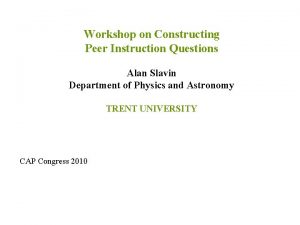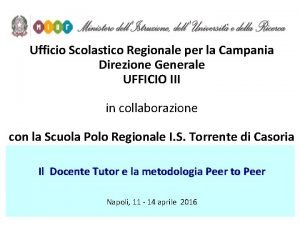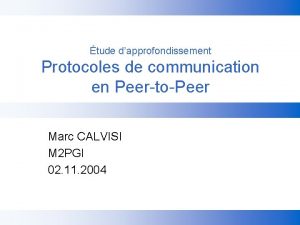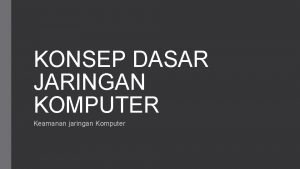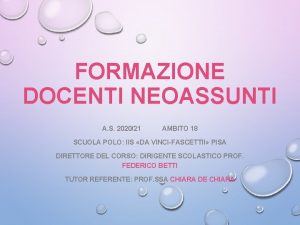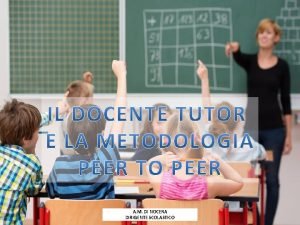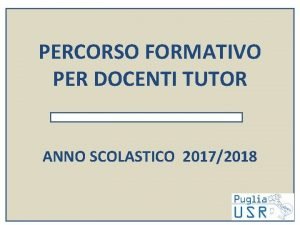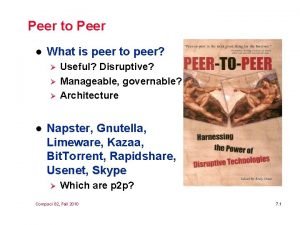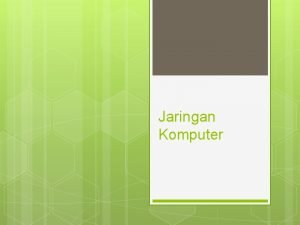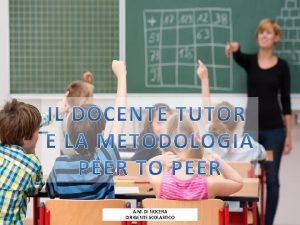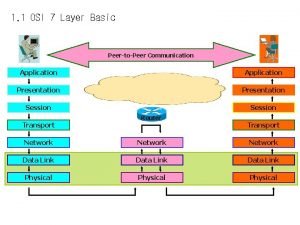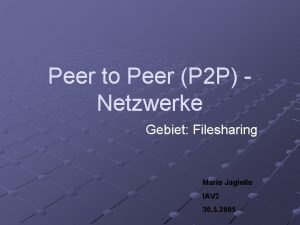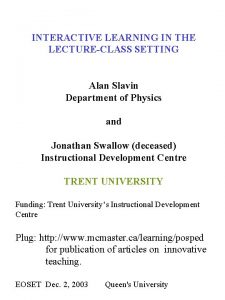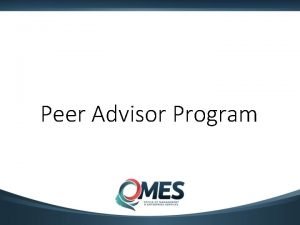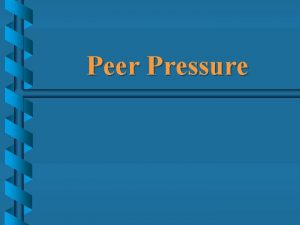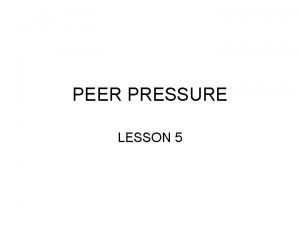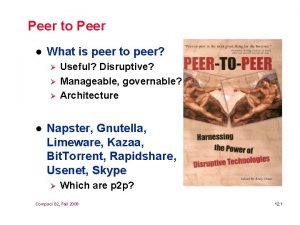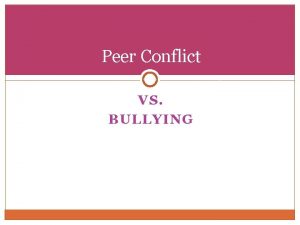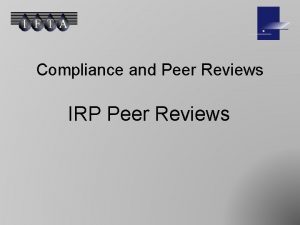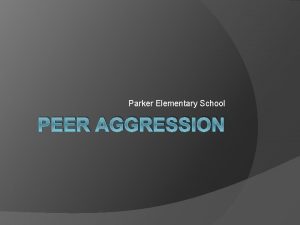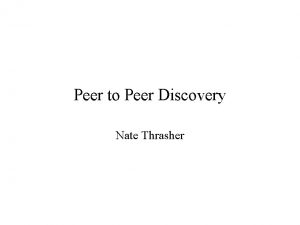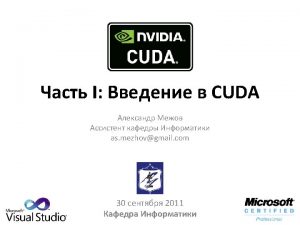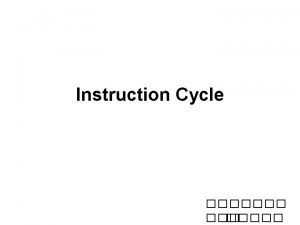Workshop on Constructing Peer Instruction Questions Alan Slavin
















- Slides: 16

Workshop on Constructing Peer Instruction Questions Alan Slavin Department of Physics and Astronomy TRENT UNIVERSITY CAP Congress 2010

OUTLINE - What is Peer Instruction? - Goals of Peer Instruction? - What makes a good question? - Group work on creating questions.

What is Peer Instruction? Q. Who use some form of Mazur's Peer Instruction approach? Who attended my Ji. TT talk yesterday? Background on Peer Instruction (if necessary): - Instructor presents a question that requires strong understanding of the concepts. For a first-year class, it usually does not require much mathematics but beyond proportionality. - A series of multiple-choice answers are usually simultaneously presented. -Students are asked to spend about a minute deciding which is the correct answer. They may be asked to vote at that point. -Students discuss the question for ~ 5 minutes, and vote again. -Voting: large display cards or electronic "clickers". Clickers show the voting pattern to the entire class; engages them. - Instructor discusses the right and wrong answers.

Example

Goals of Peer Instruction Physics Education Research has shown (Mc. Dermott) • Students must be actively involved in the process of constructing their mental models of how the world works if they are to have more than a superficial understanding. • The ability to solve standard end-of-chapter numerical problems is insufficient to develop a deep understanding. Qualitative and verbal facility with the concepts are required as well. • Most students do not develop analytical reasoning through traditional instruction. • the best time to correct a students' misconceptions is when they realize they are wrong.

Average amount of information retained through different learning methods Lecture = 5% Reading = 10% Audiovisual = 20% Demonstration = 30% Discussion Group = 50% Practice by doing = 75% Teach others / immediate use of learning = 90% Source: Brooks, J. and Brooks, M. (1993). In Search of Understanding: The Case for Constructivist Classrooms.

Types of Peer Instruction Questions Year -I - Definitions - Proportionality - Dimensional analysis - Purely conceptual - Graphical - Application of formulae (may be multiple questions) - Vote on the result of a classroom demonstration Upper-year: - Conceptual questions as used in year-1 - Simple calculations, and I rove class to check on progress.

Definitions

Proportionality The gravitational force between two objects of mass m 1 and m 2 , separated by a distance r, is given by The weight of a person of mass m on the Earth’s surface is given by W = mg What would the weight of the person be at a height of RE above the Earth’s surface, where RE is the radius of the Earth? (a) mg (b) 2 mg (d) mg/4 (e) zero (c) mg/2

Definitions, dimensionality, algebra v slope = a v 0 t Δt Which of the following expressions is the most correct? (why/why not? )

Application of formulae #1 P The magnetic field at P due to the current I in is (a) into the screen (b) out of the screen (c) up (d) down (e) zero

Application of formulae #2 The magnitude of the magnetic field contribution from the current element above is

Application of formulae #3 The total magnetic field at P from the current in the wire shown on the right is:

4 th-year Condensed Matter #1

4 th-year Condensed Matter #2

Workshop • What courses do you want to consider? (Poll) Year 1? Upper year? E&M, thermodynamics, mechanics, quantum, . . . • Divide into groups of 2 – 3. • Decide what concepts to develop; decide on needed background; develop two or three questions. • At 16: 10, discussion: insights, questions, …
 Alan slavin
Alan slavin Dean slavin
Dean slavin Annotazioni sulla verifica effettuata peer to peer
Annotazioni sulla verifica effettuata peer to peer Peer-to-peer
Peer-to-peer Peer to peer transactional replication
Peer to peer transactional replication Peer to peer transactional replication
Peer to peer transactional replication Gambar topologi peer to peer
Gambar topologi peer to peer Esempio registro peer to peer compilato
Esempio registro peer to peer compilato Sviluppo condiviso esempi di peer to peer compilati
Sviluppo condiviso esempi di peer to peer compilati Relazione finale tutor tirocinio esempio
Relazione finale tutor tirocinio esempio Peer to peer l
Peer to peer l Peer to peer merupakan jenis jaringan… *
Peer to peer merupakan jenis jaringan… * Bitcoin: a peer-to-peer electronic cash system
Bitcoin: a peer-to-peer electronic cash system Features of peer to peer network and client server network
Features of peer to peer network and client server network Ambiti operativi da supportare
Ambiti operativi da supportare Peer-to-peer communication in osi model
Peer-to-peer communication in osi model Peer to peer vorteile nachteile
Peer to peer vorteile nachteile
